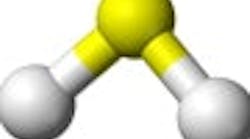Earlier this year, the U.S. Environmental Protection Agency (EPA) proposed lifting its 1994 administrative stay of Emergency Planning and Community Right-to-Know Act (EPCRA) Section 313 reporting requirements for hydrogen sulfide (H2S). Following is an explanation of why some are concerned, why EPA proposed lifting the stay, and why reporting may be unnecessary in the first place.
How It All Began
EPA added H2S to the Toxics Release Inventory (TRI) reporting list on December 1, 1993, (58 Fed. Reg. 63500) in response to a 1992 petition filed by the Natural Resources Defense Council and others. The agency concluded that H2S met EPCRA Section 313(d)(2)(B) criteria for cancer or other chronic human toxicity and EPCRA Section 313(d)(2)(C) criteria for environmental toxicity.
EPA announced an administrative stay of TRI reporting requirements for H2S on August 22, 1994. EPA then deferred reporting requirements to review "new data" and information made available after the rule was issued.
Industry stakeholders claimed that the basis for listing H2S was flawed, and violated the Administrative Procedure Act (APA). In proposing to list H2S, EPA cited chronic human toxic effects, specifically respiratory effects. However, that was based on observed neurotoxic effects. Several industry groups threatened to sue EPA if no stay was granted. EPA then stated it would review the new information and make its results available for public comment.
Lifting The Stay?
EPA first considered lifting the stay (75 Fed. Reg. 8889) on February 26. Curiously, EPA stated that it "is not revisiting the original listing decision …" EPA nonetheless provided a detailed rationale determining that the second and third criteria in EPCRA Section 313(d)(2) have been met. It carefully noted differences between that rationale and explanations that it originally gave to list H2S. [pullquote]
EPA also added some 55 new documents to the record, all of which were available for public review for the first time on February 26. EPA provided a very short comment period given the large number of documents. Stakeholders asked for and received an additional 15 days to comment.
Some say that EPA cannot properly lift the stay, or impose any new reporting requirements for H2S, until after it makes a new determination based on statutory listing criteria in EPCRA Section 313(d)(2) and the best current scientific data. Nor, some argue, can EPA lawfully limit public comment on whether the stay should be lifted. Rather, EPA must afford a full opportunity for comment on any determination it may make that it's appropriate to reaffirm the prior H2S listing determination.
A key legal issue relates to EPA's adoption of a policy about use of exposure analyses in making EPCRA Section 313 listing determinations, which EPA did shortly after it issued the 1994 order. EPA hadn't previously applied that policy to H2S, leaving the administrative record amenable to a claim that it doesn't include any objective criteria for EPA to use in making certain key determinations under that policy. Similarly, some argue that EPA provided no explanation of the relation between its current H2S hazard assessment and specific determinations it states that it has made under this policy. Some claim that under the APA, EPA must provide an opportunity for comment on its determination that H2S may cause chronic human health effects and ecological toxicity at "relatively low levels" before affirming its listing decision under EPCRA Sections 313(d)(2)(B) and 313(d)(2)(C).
A final concern is that EPA didn't properly consider new scientific information that has become available since the 2003 H2S assessment under the Integrated Risk Information System (IRIS). Some claim that the new data show that there's no practical utility in requiring reporting H2S releases associated with routine operations. Accidental H2S releases that might involve a more consequential hazard are already well regulated under EPCRA Section 304, Section 103 of the Comprehensive Environmental, Response, Compensation, and Liability Act, and Section 112(r) of the Clean Air Act.
Based on these concerns, it's unclear whether EPA will lift the stay and require reporting or conclude no reporting is necessary and dissolve the stay. Given how many industry sectors may be required to report H2S releases, EPA's decision will be anxiously and carefully watched.
Lynn Bergeson is managing director of Bergeson & Campbell, P.C., a Washington, D.C.-based law firm that concentrates on chemical industry issues. The views expressed herein are solely those of the author. This column is not intended to provide, nor should be construed as, legal advice. You can e-mail her at [email protected].

